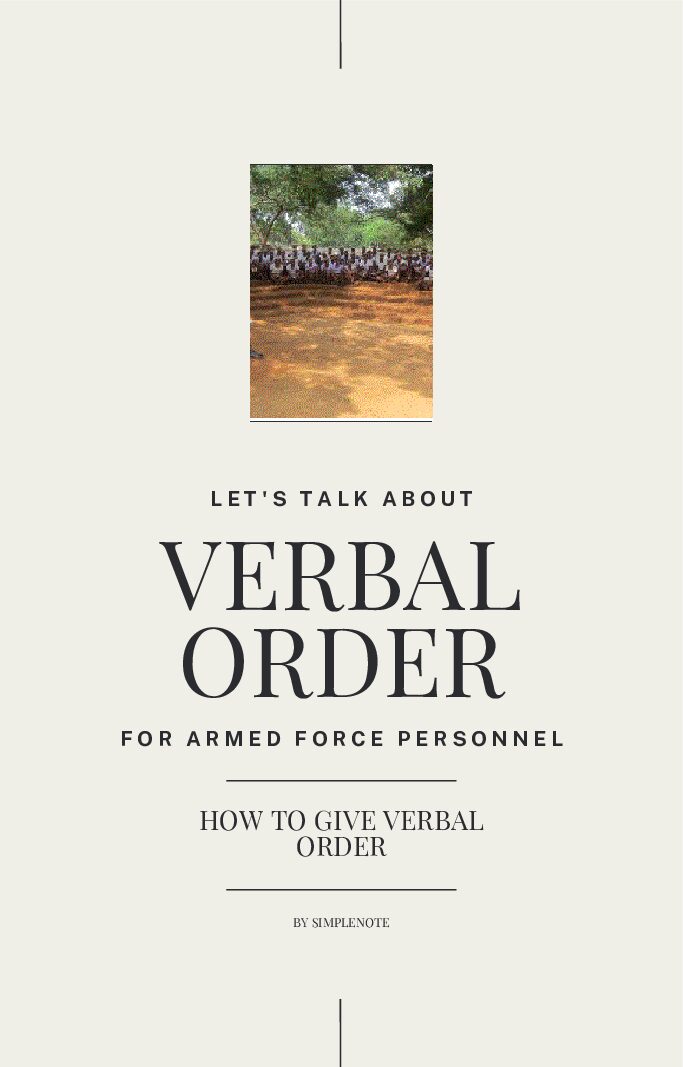Top 10 Powerful Concepts of Justice: Introduction
Justice is a word we often hear. We find it in courtrooms, in protests, in books, and even in daily conversations. But what is the concept of justice, really?
Synopsis
In simple terms, justice means fairness. It means giving every person what they deserve. Justice protects the weak, balances the powerful, and helps society work peacefully. Without justice, laws would have no meaning. Rights would be ignored. And wrongs would go unpunished.
You may like this: Judicial Review Explained: Meaning, Importance, Examples, and Global Perspective
The importance of justice in society cannot be overstated. In both India and the United States, justice is a core value. In India, the Constitution begins with a promise of justice—social, economic, and political. In the U.S., justice is written into the Constitution’s Preamble too. These promises form the foundation of both legal systems.
Justice is not just about courts or judges. It is about people. When a worker is paid fairly, that is justice. When a victim is heard in court, that is justice. When rules apply equally to the rich and the poor, that is justice. It touches every part of our lives.
As society changes, so does the idea of justice. New challenges—like digital privacy, artificial intelligence, and economic inequality—make us ask: what does justice mean today?
This post will explore what the concept of justice means in law and daily life. We will study its theories, its forms, and its use in India and the U.S. We’ll also look at real court cases, global views, and the future of justice.
Understanding justice is not just for lawyers or judges. It’s for anyone who cares about fairness. Let’s begin this journey by looking at the theories that shaped our understanding of justice.
Theories of Justice explained with examples
To understand justice deeply, we must explore the major theories of justice with examples. Over time, philosophers and legal thinkers have offered many views. These theories shape how courts, governments, and societies make decisions.
1. Aristotle’s Justice Theory
Aristotle divided justice into two types—distributive justice and corrective justice.
- Distributive justice means giving people what they deserve, based on merit or need.
- Corrective justice focuses on fixing wrongs through fair punishment or compensation.
Example: If a person steals money, corrective justice would require them to return it and face legal action.
You may like this: From Locus Standi to PIL: Understand in 10 points, How Indian Judiciary Changed Access to Justice
2. Rawls Theory of Justice
John Rawls, a modern philosopher, wrote about justice as fairness. He imagined a world where people design rules without knowing their status in society. This idea is called the “veil of ignorance”.
Rawls said justice means protecting the most disadvantaged.
Example: In public healthcare, policies should help the poor more because they are the most vulnerable.
3. Amartya Sen’s Comparative Justice
Indian economist and thinker Amartya Sen believed that real justice focuses on removing injustice rather than chasing a perfect system.
Example: If a child has no access to education, fixing that problem is justice—even if the whole system isn’t perfect.
4. Robert Nozick’s Libertarian View
Nozick argued that justice is about protecting individual freedom and property.
Example: If you earn money lawfully, you have the right to keep it, even if others have less.
These theories of justice with examples help us see justice from many angles. In the next section, we will explore how these theories appear in the types of justice in law—like distributive and procedural justice.
Forms and Types of Justice in law
Now that we know the main theories, let’s explore the practical side: the types of justice in law. These forms help judges and lawmakers apply justice in real life. Each type serves a different purpose in society and legal systems like those in India and the USA.
1. Distributive Justice
Distributive justice meaning is simple—it’s about fair sharing of resources, rights, and opportunities. It follows the idea that people should get what they need or deserve.
Example: In India, reservation policies (like OBC or SC/ST quotas) aim to give fair access to jobs and education.
In the U.S., affirmative action programs work similarly for minority groups.
2. Procedural Justice
Procedural justice means fairness in the process of making decisions. It’s not just the result that matters, but how we get there.
Example: If a person is arrested, procedural justice ensures they get a fair trial, a lawyer, and the chance to present evidence.
This is protected under Article 21 in India and the 14th Amendment in the U.S.
3. Corrective Justice
This form focuses on fixing wrongs. It is about punishing the guilty and compensating the victim.
Example: In a civil case for cheating, corrective justice means returning money and paying damages.
4. Restorative Justice
This type of justice focuses on healing. Instead of punishment, it brings the offender and victim together to talk and find a solution.
It is gaining popularity in juvenile courts and community policing models.
5. Social Justice
Social justice ensures equal treatment and human dignity for all. It fights against discrimination and supports inclusiveness.
Example: Legal actions against caste or racial discrimination fall under social justice.
These types of justice in law connect theory to practice. In the next section, we will see how the Indian Constitution guarantees justice for all its citizens.
Justice under the Indian Constitution
Justice is a core promise of the Indian Constitution. It appears right at the beginning in the Preamble. It says India shall secure “Justice: social, economic and political” for all its citizens. But what does justice under the Indian Constitution really mean?
Justice in India is not just a goal. It is a right. Several articles in the Constitution protect it, especially Article 14 (equality before law) and Article 21 (right to life and personal liberty). These rights have been interpreted in powerful ways by the Indian judiciary.
Let’s look at some important Indian case laws on justice:
1. Maneka Gandhi v. Union of India (1978)
This case changed how we understand personal liberty. The Supreme Court said that “procedure must be fair, just, and reasonable.” This gave a strong push to procedural justice in India.
2. Indra Sawhney v. Union of India (1992)
This case dealt with reservations for backward classes. The Court upheld quotas as a tool to achieve social justice. It also set limits to prevent misuse.
3. Navtej Singh Johar v. Union of India (2018)
This case decriminalized same-sex relationships. It was a historic step toward dignity, equality, and corrective justice.
4. Vishaka v. State of Rajasthan (1997)
This case created the first guidelines to prevent sexual harassment at the workplace. It brought distributive and social justice to working women.
The judiciary in India has played a huge role in interpreting justice. Over the years, courts have linked justice with dignity, fairness, and equality. These Indian case laws on justice show how theory becomes practice.
Next, let’s explore how justice works in the U.S. legal system, and compare it with the Indian model.
Justice in the U.S. Legal System
Justice in the United States legal system is rooted in its Constitution and values like freedom, fairness, and equality. The U.S. believes in “equal justice under law,” a phrase engraved on the Supreme Court building itself.
The Preamble to the U.S. Constitution mentions “establishing justice” as a primary goal. The structure of justice is mainly built on the 5th and 14th Amendments. These guarantee due process and equal protection to every person, including non-citizens.
Let’s understand how justice and equality in USA work through major court rulings.
1. Brown v. Board of Education (1954)
This case ended racial segregation in schools. The U.S. Supreme Court declared that “separate but equal” was not truly equal. It was a turning point in achieving social justice.
2. Gideon v. Wainwright (1963)
Here, the Court ruled that poor defendants have the right to a state-appointed lawyer. This case upheld procedural justice and fair trial rights.
3. Roe v. Wade (1973) (and its later reversal in Dobbs v. Jackson 2022)
This case granted and then reconsidered a woman’s right to abortion. It opened a big debate about legal justice, morality, and privacy rights in the U.S.
4. Obergefell v. Hodges (2015)
This case legalized same-sex marriage across the U.S., showing how justice and equality in USA evolve with society.
The U.S. legal system strongly believes in protecting individual rights, sometimes more so than group rights. This focus on liberty shapes how justice in United States legal system is applied.
In the next section, we will look at how legal justice and moral justice often come into conflict—and how law tries to balance them.
Legal Justice vs Moral Justice
Justice can mean different things to different people. One major difference is between legal justice and moral justice. While they may seem similar, they are not always the same.
What is Legal Justice?
Legal justice is what the law says. It follows written rules made by lawmakers and enforced by courts. It ensures order, punishment, and rights. Courts are expected to follow legal rules, even if they seem harsh or outdated.
Example: If someone drives without a license, they can be fined or jailed. That’s legal justice—even if they were driving to help someone in need.
What is Moral Justice?
Moral justice is based on ethics, values, and what people think is right or wrong. It is shaped by society, religion, and personal belief. It goes beyond what’s written in law books.
Example: A poor man steals food to feed his starving child. Legally, it’s a crime. But morally, many people may feel he should not be punished.
This gap between legal vs moral justice often causes public debate. Courts must decide whether to follow the law strictly or interpret it with fairness in mind.
Examples of Moral and Legal Justice Conflicts:
- LGBTQ+ Rights: Before Navtej Johar v. Union of India, homosexuality was illegal in India. Legally wrong, but morally, many believed it was a personal choice.
- Civil Disobedience: Leaders like Gandhi and Martin Luther King Jr. broke unjust laws. They followed moral justice over legal rules.
- Whistleblowers: People who leak government secrets may break the law, but they often do it for public good.
Balancing legal vs moral justice is one of the biggest challenges in any legal system.
In the next section, we’ll explore how modern challenges like AI and digital courts are changing the idea of justice today.
You may like this: Judicial Creativity Explained: Tools, Techniques, and Global Case Studies
Contemporary Challenges to Justice
The idea of justice is not frozen in time. As the world changes, so do the ways we deliver justice. Today, digital justice and the use of AI in courts are transforming how laws are applied. But these new tools also bring fresh challenges.
1. Digital Justice: Courtrooms Go Online
In both India and the U.S., courts now hold virtual hearings. This began during COVID-19 and has continued due to its speed and convenience.
Example: India’s e-Courts Mission and the U.S. federal courts’ video systems aim to bring justice closer to people.
But digital justice isn’t perfect. Not everyone has internet access. Some don’t know how to use digital tools. This creates a digital divide, which can lead to unfair outcomes.
2. AI in Courts: Help or Harm?
Courts are now using AI in courts to assist with tasks like case tracking, bail decisions, and legal research.
Example: India’s Supreme Court introduced SUPACE, an AI tool that helps judges summarize documents.
However, AI is not human. It may carry biases from the data it was trained on. This can lead to unfair judgments. In the U.S., some states used AI to decide prison sentences. But these tools were found to be biased against certain racial groups.
3. Privacy and Data Concerns
Digital platforms collect a lot of personal information. If not handled properly, it can lead to data leaks and misuse. This challenges the right to privacy—part of justice in the modern world.
Modern tools must be used wisely. Technology can help make justice faster and more efficient. But it should never replace fairness, empathy, or human judgment.
In the next section, we’ll compare how India and the U.S. approach justice differently, and where they meet on common ground.
You may like this : What is Judicial Activism? A must-know 13-point Essay
Comparative Jurisprudence: India vs USA
Justice is a shared value in both India and the United States. But their legal systems have different roots, methods, and outcomes. By studying comparative law justice India vs USA, we can understand how each country views fairness, liberty, and equality.
1. Foundations of Law
- India follows a common law system influenced by British colonial rule.
- The USA also uses common law, but its system is built heavily on its written Constitution and Bill of Rights.
Both nations guarantee justice in their preambles. But the U.S. focuses more on individual liberty, while India often balances liberty with social equality.
2. Judicial Structures
- In India, the Supreme Court has wide powers under Articles 32 and 136. Public Interest Litigations (PILs) allow even non-victims to seek justice.
- In the USA, the federal structure allows state and federal courts to operate separately. People must usually be directly affected to file a case.
India’s PIL system makes justice more accessible, while the U.S. system emphasizes personal standing and limited judicial review.
3. Landmark Themes in Justice
- India emphasizes social justice, often using affirmative action to uplift marginalized groups.
- The USA leans toward liberty-based justice, protecting freedom of speech, religion, and privacy—even when unpopular.
Example: The U.S. Supreme Court allowed burning the flag as free speech (Texas v. Johnson), while India restricts speech that could harm public order.
4. Similarities
Both countries believe in constitutional supremacy, judicial independence, and due process. Their courts often cite global examples and human rights laws in major judgments.
Understanding comparative law justice India vs USA shows us how the idea of justice adapts to culture, history, and values.
Next, we’ll dive into real case studies that demonstrate these ideas in action.
Real-Life Case Studies of Justice
To understand justice better, we need real stories. Court cases bring legal theories to life. These real examples of justice show how courts apply fairness, equality, and law to solve real problems.
Below are some famous case laws on justice from India and the USA that highlight different types of justice:
India: Maneka Gandhi v. Union of India (1978)
Type of Justice: Procedural Justice
Facts: Maneka Gandhi’s passport was seized without a hearing.
Judgment: The Supreme Court ruled that any procedure affecting life or liberty must be fair, just, and reasonable.
Impact: This case expanded Article 21 and made due process a key part of Indian law.
USA: Gideon v. Wainwright (1963)
Type of Justice: Procedural and Legal Justice
Facts: Clarence Gideon was denied a lawyer because he couldn’t afford one.
Judgment: The U.S. Supreme Court said the right to legal counsel is essential for a fair trial.
Impact: Every poor defendant now has a right to a free lawyer in serious criminal cases.
India: Navtej Singh Johar v. Union of India (2018)
Type of Justice: Corrective and Social Justice
Facts: This case challenged Section 377, which criminalized same-sex relationships.
Judgment: The law was struck down. The court said dignity and privacy are part of personal liberty.
Impact: A big step for LGBTQ+ rights in India.
USA: Brown v. Board of Education (1954)
Type of Justice: Social Justice
Facts: Schools in the U.S. were racially segregated.
Judgment: The Supreme Court ruled that “separate but equal” schools were unconstitutional.
Impact: A turning point in the U.S. civil rights movement.
These famous case laws on justice show how courts correct wrongs and shape society.
Conclusion: Justice in the Future – Way Forward
Justice is not a fixed idea. It changes with time, technology, and society. As we’ve seen in this post, the meaning and application of justice have grown across cultures, courts, and countries. But what is the future of justice?
In modern society, new challenges are rising. Digital courts are speeding up trials. Artificial Intelligence is helping judges sort through evidence. Social media is shaping public opinion on legal issues. These changes can improve access, but they also raise concerns about fairness, bias, and privacy.
Justice in the modern world must balance tradition with innovation. For example:
- In India, e-Courts are making legal access easier in rural areas.FAQ: The Concept of Justice in Law – Your Questions Answered
- In the USA, virtual hearings are helping reduce backlogs.
- Both countries are debating the ethical use of AI in justice systems.
But technology must not replace human values. Empathy, fairness, and context cannot be coded. Courts must ensure that the future of justice is still grounded in dignity, equality, and transparency.
Education plays a big role. Law students and future lawyers must learn not just laws, but justice. That means asking tough questions:
- Is this law fair?
- Who does it help or harm?
- Can it be improved?
The concept of justice will always evolve. But its core will stay the same: doing what is right, fairly, for everyone.
As we step into the future, we must ensure that justice in modern society is not only fast and smart—but also fair, human, and accessible.
FAQ: The Concept of Justice in Law – Your Questions Answered
Q1. What is the concept of justice in simple words?
Answer:
Justice means fairness. It ensures that everyone is treated equally, their rights are protected, and wrongdoers are punished. In law, justice helps maintain order and give people what they deserve.
Q2. What are the main theories of justice in law?
Answer:
The main theories of justice in law include:
- Aristotle’s theory – focuses on fairness based on merit
- Rawls theory of justice – emphasizes justice as fairness and protecting the weakest
- Amartya Sen’s theory – focuses on removing clear injustices
- Nozick’s libertarian view – stresses individual freedom and property rights
Each theory gives a different view on how to achieve justice in society.
Q3. What is distributive justice and how does it work?
Answer:
Distributive justice means fair distribution of resources, opportunities, and wealth. It ensures people get what they need or deserve. In India, reservation policies are an example. In the U.S., affirmative action follows this idea.
Q4. What is the difference between legal and moral justice?
Answer:
Legal justice follows written laws. Moral justice is based on what is ethically right. Sometimes, the law and morality match, but not always. For example, helping someone in need may be morally right but still break a law.
Q5. How does the Indian Constitution promote justice?
Answer:
The Indian Constitution promises justice in the Preamble—social, economic, and political. Articles 14 and 21 protect equality and liberty. Courts like the Supreme Court use these rights to promote justice through landmark judgments.
Q6. How does the U.S. legal system define justice?
Answer:
In the U.S. legal system, justice means fairness, liberty, and equal protection. The Constitution, especially the 5th and 14th Amendments, ensures due process and individual rights for all.
Q7. What are some real examples of justice in law?
Answer:
Real examples of justice in law include:
- Maneka Gandhi v. Union of India (India): ensured fair procedures
- Brown v. Board of Education (USA): ended school segregation
- Navtej Singh Johar case: promoted LGBTQ+ rights in India
- Gideon v. Wainwright: gave poor defendants a right to a lawyer in the U.S.
Q8. What is digital justice and why is it important today?
Answer:
Digital justice means using technology like virtual courts and online filings to improve access to justice. It helps people in remote areas but also raises concerns about fairness, privacy, and digital inequality.
Q9. Can AI replace judges in the future?
Answer:
No, AI in courts can help judges with tasks like research or tracking cases, but it cannot replace human judgment. Justice needs empathy, context, and fairness—things machines can’t fully understand.
Q10. Why is justice important in a democracy?
Answer:
Justice keeps a democracy fair and balanced. It protects rights, checks power, and gives people a voice. Without justice, laws lose meaning and society becomes unequal.
Bibliography / References
Books & Academic Sources
- Rawls, John. A Theory of Justice. Harvard University Press, 1971.
- Sen, Amartya. The Idea of Justice. Harvard University Press, 2009.
- Nozick, Robert. Anarchy, State, and Utopia. Basic Books, 1974.
- Aristotle. Nicomachean Ethics. Translated by Terence Irwin, Hackett Publishing, 1999.
Indian Case Laws & Legal Sources
- Maneka Gandhi v. Union of India, AIR 1978 SC 597
https://indiankanoon.org/doc/1766147/ - Indra Sawhney v. Union of India, 1992 Supp (3) SCC 217
https://indiankanoon.org/doc/1363234/ - Navtej Singh Johar v. Union of India, (2018) 10 SCC 1
https://indiankanoon.org/doc/168671544/ - Vishaka v. State of Rajasthan, AIR 1997 SC 3011
https://indiankanoon.org/doc/1031794/
US Supreme Court Cases
- Brown v. Board of Education, 347 U.S. 483 (1954)
- Gideon v. Wainwright, 372 U.S. 335 (1963)
- Obergefell v. Hodges, 576 U.S. 644 (2015)
Online & Institutional Sources
- Indian Judiciary Official Website
- e-Courts India Portal
- U.S. Courts Official Website
- Stanford Encyclopedia of Philosophy: Justice
- Ministry of Law and Justice, India
Note: This post can be referred to answer the “Explain the concept of Justice.”
Download Pdf: Top 10 Powerful Concepts of Justice Explained with Case Laws, Theories & Global Perspectives
![]()









